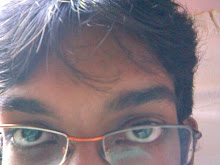- 0.12034
- 0.41233
- 0.398554
- 0.777776
- 0.146231
- 0.238765
Saturday, September 25, 2010
Sunday, June 27, 2010
Fermat’s last theorem
A beautiful documentary which narrates the story of Andrew Wiles, who proved Fermat’s last theorem in 1994. Ten-year-old Andrew Wiles read about this 400 years old problem in his local Cambridge library, he dreamt of solving the problem that had haunted so many great mathematicians.
"Here was a problem, that I, a ten-year-old, could understand and I knew from that moment that I would never let it go. I had to solve it."
When he reached college, he spent time studying various approaches that great mathematicians of 18th and 19th century who tried to prove the conjecture. In 1986 Another mathematician found a link between some properties of elliptic curves (Taniyama-Shimura conjecture) and the problem.
After six years of working alone in 1993 he managed to achieve his childhood dream.
"You can't really focus yourself for years unless you have undivided concentration, which too many spectators would have destroyed"
What other mathematical documentaries are you fond of?
This would be a great place to share them :)
Wednesday, May 12, 2010
The road not taken
I shall be telling this with a sighSomewhere ages and ages hence:Two roads diverged in a wood, and I--I took the one less traveled by,And that has made all the difference
Sunday, May 2, 2010
Saturday, May 1, 2010
Dangerous Knowledge
A timeless documentary looking at four brilliant mathematicians (Georg Cantor, Ludwig Boltzmann, Kurt Gödel and Alan Turing) whose genius has profoundly affected us, but which tragically drove them insane and eventually led to them all committing suicide.
It starts with the presenter David Malone saying
"Beneath the surface of the world...
are the rules of science.But beneath them, there is
a far deeper set of rules.
A matrix of pure mathematics,
which explains the nature
of the rules of science,and how it is we can understand
them in the first place."
These four great mathematicians shook the foundation of mathematics and science and introduced a whole new world of mathematics.
Thursday, December 31, 2009
Happy new Decade !

It's last few minutes of another year, not just an year it's a decade. WE are going to set foot on the second decade of this millennium.
The new year starts for us in the best way, with exams starting on 11th January :P.
I hope to blog more in the coming year.
May all your wishes come true in new decade!
Saturday, July 18, 2009
Convert linux package files one to another easily
Sometimes it's very difficult to find deb for an rpm only (or vice versa).
I spent some time searching for a tool to convert .deb to .rpm(still google chrome is ditributed as .deb only).
So I found this tool written in Perl very useful. It's Alien, a script which can convert between .rpm, .deb, .slp and tar.gz(.tgz)
Download it from here .
Unzip it and makesure your system has perl installed and perl version is 5.004 or greater .If not install the latest version by
$sudo apt-get install perl (on Debian distributions)
go into the folder from terminal and type to start installing.
$ perl Makefile.PL
$ make
sudo make install
and it will be installed, and check its man pages for more details.
Its very easy to convert a foriegn package format to the native packaging format of your distribution.
Like
to convert an rpm to .deb on Ubuntu
sudo alien -d file_name.rpm
file_name.deb will be generated.
But converting vice versa is a different story, such as converting a .deb to an .rpm on Ubuntu will give dependency problems. :(
Using verbose option as an command line argument, you can see what alien is doing behind the scenes.

So, no more problems of searching for rpms for deb only softwares :-)
May, Google be with you :P






